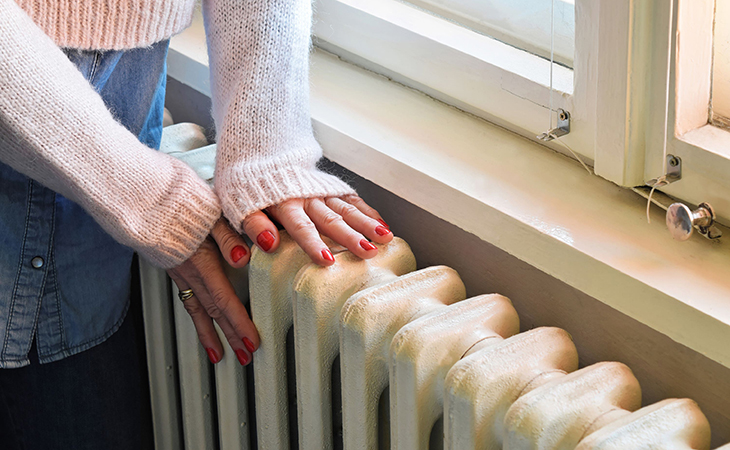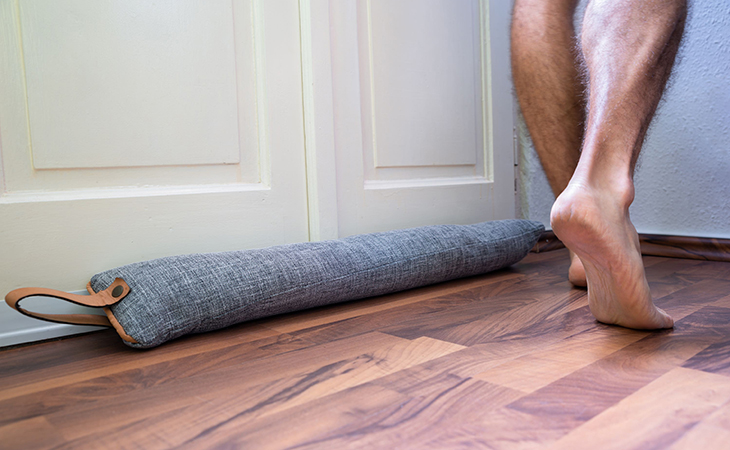Outside our four walls, the days are getting shorter and the mornings colder.
All the more reason, therefore, to make sure our homes are ready to fight the elements, and reduce our bills and carbon emissions at the same time. Here’s how to stay snug this winter.
Spread the soft furnishings

We’ve all felt the short, sharp shock of walking on a cold floor in the morning, and rugs are particularly effective at warming up your surfaces. The material acts as an effective extra layer of insulation, and keeps your toes toasty any time of day.
Read more: Warm your house this winter with cheap tricks and canny heater choice
Tapestries and wall hangings behave like rugs for your walls, limiting conductive heat loss through poorly insulated masonry. The thicker and heavier the material, the more effective it will be, and a woven quilt will keep you far cosier than a poster or print.
If you think warmer, you’ll probably feel warmer, and a fresh lick of paint in a bright, vibrant colour can work wonders – all the better if you illuminate it with warm, yellow light.
Dress your windows
Just as furry fabrics can cold-proof floors and walls, so too can they shore up your windows. A simple set of curtains form an added layer of heat retention, while blinds and sealed shutters are almost as effective at stopping draughts. For the best results, select curtains with specific thermal linings – often filled with high-density foam or wool.

If you are willing to embark on structural changes, double or triple glazing are obvious options for a more temperate front room. This is not a DIY job, but the extra glass spares you unwanted noise too, and the work should pay for itself in reduced energy bills within a few years.
Embrace insulation
Proper wall insulation is quite an undertaking, and would likely mean getting the builders in, but poorly insulated brickwork absolutely haemorrhages heat.
In an uninsulated home, approximately 25 per cent of heat loss takes place through the roof. A thick layer of insulation in your loft should last a good four decades and pay for itself many times over. Though perfectly possible, DIY loft insulation is for experienced home improvers only, and if you wouldn’t know where to begin, you probably shouldn’t.
If your ceiling is suffering from damp, or the joists aren’t easily accessible, we strongly recommend calling in the pros.
Read more: Your home is your castle, but how to add value – or not?
If you have chilly feet and deep pockets, you could even install underfloor heating. We’re not even going to touch on the process – just call a builder.
Close up the cracks
If a windy day is accompanied by whistling sounds, or the regular chill of a draught, there are probably holes in your home exterior that will be letting heat out as well as letting cold in, and driving up your heating bill.
Silicone sealant or self-adhesive strips can easily plug slits and unsightly gaps around your windows, and are straightforward to apply. Full-blown cracks in the masonry can be filled with dollops of cement or hard-setting filler, but you may wish to call in a professional to find out what caused the rupture. If in doubt, ask your local hardware store what product suits your needs.
Remember not to block intentional ventilation designed to let air out of your home, such as extractor fans, designated wall vents, and underfloor grilles.

Doors are harder to seal, for obvious reasons, but a simple draught excluder (or even a well-rolled towel) can block breezes blowing beneath them. A metal keyhole cover can close another common crevice, as can a letterbox brush.
Smart heating
A smart thermostat can target your heating to ensure you’re only using (and paying for) what you need. An early standard bearer for the smart revolution, these gadgets will connect your heating system to an app on your smartphone, allowing you to schedule your heating to come on ahead of time, or simply turn it on when you’re heading home.
Read more: Do you understand the charges on your electricity bill?
Many modern models can heat room by room, and it’s remarkable to think that a mere decade ago, these go-to gizmos were seen as the peak of domestic tech.
Friendly fire
The oldest route to warmth by some margin, there’s no beating the primal pleasures of a roaring hearth. As common in medieval banqueting halls as modern living rooms, wood fires are easy on the eyes and the ears, but require you to buy and ignite your own logs, and can clog the chimney with soot.

A compromise between warmth and low maintenance, gas fires spent years at the head of the pack, though they do require annual check-ups and professional installation. Electric fires can’t compete for heat, but are cleaner and usually more eco-friendly.
Finally, there are biofuel fires – restrained flames that run on denatured alcohol. Energy-efficient, dramatic, and mobile, they lack the raw force of an open blaze, and should be bought as secondary heat sources only.
As ever, the more effectively you insulate the rest of your home, the more it will retain heat, and the more effective your fireplace will be.
Have you put the winter doona on the bed yet? Do you have an inbuilt heating and cooling system?
– With PA
If you enjoy our content, don’t keep it to yourself. Share our free eNews with your friends and encourage them to sign up.

